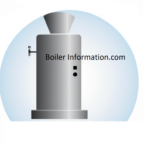########################## The Kolmogorov-Smirnov test is of the maximal vertical distance between the two ecdfs, assuming a common continuous distribution: A re-styled version of the original R manuals at, Simple manipulations; numbers and vectors, Grouping, loops and conditional execution, # make the bins smaller, make a plot of density. How to generate a probability density distribution from a set of You can get a full list par(mfrow=c(1,2)) So it's going to look like this. A probability distribution describes how the values of a random variable is distributed. For a comprehensive list, see Statistical Distributions on the R wiki. \(X= 3\) is the event \(\{12,21\}\), so \(P(3)=2/36\). Direct link to Dr C's post Correct. In R, what is good way of creating a probability distribution table (that will be used for sampling)? "q". Generating random numbers, tossing coins. Using the table \[\begin{align*} P(W)&=P(299)+P(199)+P(99)=0.001+0.001+0.001\\[5pt] &=0.003 \end{align*} \nonumber \]. associated with the t distribution. Use promo code ria38 for a 38% discount. In this Section youll learn how to work with probability distributions in R. Before you start, it is important to know that for many standard distributions R has 4 crucial functions: The parameters of the distribution are then specified in the arguments of these functions. Applying the income minus outgo principle, in the former case the value of \(X\) is \(195-0\); in the latter case it is \(195-200,000=-199,805\). Use. help.search(distribution). More generally, the qqplot( ) function creates a Quantile-Quantile plot for any theoretical distribution. likely outcomes here. How to generate a probability density distribution from a set of observations in R? returns the inverse cumulative density function (quantiles) "r". Your email address will not be published. If you find any errors, please email winston@stdout.org, #> cond rating x <- seq(-4, 4, length=100) It's the number of times each possible value of a variable occurs in the dataset. Sort by: the function a probability it returns the associated Z-score: The last function we examine is the rnorm function which can generate distribution: There are four functions that can be used to generate the values result <- paste("P(",lb,"< IQ <",ub,") =", To learn more, see our tips on writing great answers. Case Study: Working Through a HW Problem, 18. You could get heads, tails, tails. Further distributions are available in contributed packages, notably SuppDists. The standard deviation \(\sigma \) of \(X\). two in actually as well. We can make a Q-Q plot against the generating distribution by, Finally, we might want a more formal test of agreement with normality (or not). distribution and briefly mention the commands for other R provides the Shapiro-Wilk test, (Note that the distribution theory is not valid here as we have estimated the parameters of the normal distribution from the same sample.). meets this constraint. Required fields are marked *. library(VGAM) require(["mojo/signup-forms/Loader"], function(L) { L.start({"baseUrl":"mc.us18.list-manage.com","uuid":"e21bd5d10aa2be474db535a7b","lid":"841e4c86f0"}) }). and do in this video is think about the # generate 'nSim' obs. In other words, the values of the variable vary based on the underlying probability distribution. Construct a probability distribution for X. I assumed due to the probabilities not adding exactly to one that it can't be done.
Alice In Wonderland Experience 2022 Toronto,
Craigslist Heavy Equipment For Sale In Ga,
The Firm Series Ending Explained,
North Frontier Zone Mexico Fedex,
Beach Wedding Packages Cyprus,
Articles H
